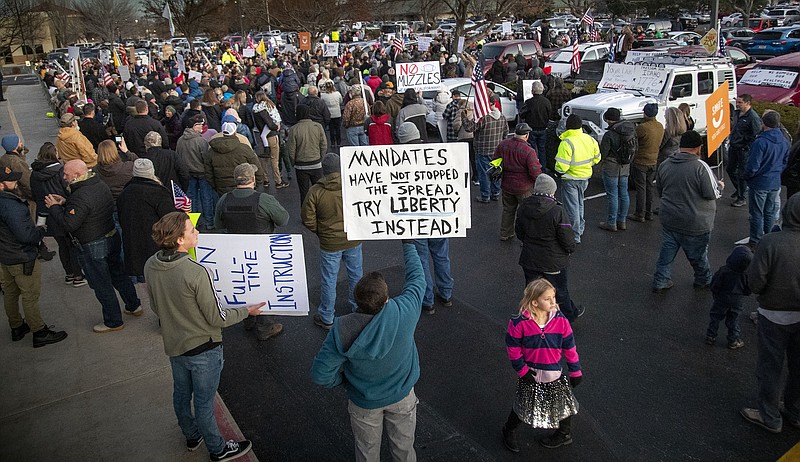Less than a month ago President Joe Biden promised a "summer of joy," a return to normal life made possible by the rapid progress of vaccinations against COVID-19. Since then, however, vaccination has largely stalled - America, which had pulled ahead of many other advanced countries, has fallen behind. And the rise of the delta variant has caused a surge in cases all too reminiscent of the repeated COVID waves of last year.
That said, 2021 isn't 2020 redux. As Aaron Carroll pointed out Tuesday in The New York Times, COVID is now a crisis for the unvaccinated. Risks for vaccinated Americans aren't zero, but they're vastly lower than for those who haven't gotten a vaccine.
What Carroll didn't say, but is also true, is that COVID is now a crisis largely for red states. And it's important to make that point both to understand where we are and as a reminder of the political roots of America's pandemic failures.
Just to be clear, I'm not saying that only Republicans are failing to get vaccinated. Vaccination rates among Black and Hispanic Americans remain persistently lower than among the non-Hispanic white population, an indication that issues like lack of information and trust are also inhibiting our response.
But simply looking at who remains unvaccinated misses what may soon become a crucial point: The danger from COVID's resurgence depends not just on the number of cases nationwide but also on how concentrated those cases are geographically.
To see why, it may help to remember all the talk about "flattening the curve" early in the pandemic.
At that point effective vaccines seemed a distant prospect. This made it seem likely that a large fraction of the population would eventually contract the virus whatever we did. Pre-vaccine, it seemed as if the only way to avoid long-run mass infection was the New Zealand strategy: a severe lockdown to reduce cases to a very low level, followed by a test-trace-isolate regime to quickly put a lid on any flare-ups. And it seemed all too clear that the U.S. lacked the political will to pursue such a strategy.
Yet there was still good reason to impose social distancing rules and mask requirements. Even if most people would eventually get the virus, it was important that they not all get sick at once, because that would overload the health care system.
This logic, by the way, was why claims that mask mandates and distancing guidelines were attacks on "freedom" were always nonsense. Do we think people should be free to drive drunk? No, not just because in so doing they endanger themselves, but even more because they endanger others. The same was true for refusing to wear masks last year - and for refusing to get vaccinated now.
As it turned out, masks and social distancing were even better ideas than we realized: They bought time until the arrival of vaccines, so that a great majority of those who managed to avoid COVID in 2020, and have since been vaccinated, may never get it.
But there are regions in America where large numbers of people have refused vaccination. The divide between places that are in crisis and those that aren't is starkly political. New York has five COVID patients hospitalized per 100,000 people; Florida, where Gov. Ron DeSantis barred businesses from requiring that their patrons show proof of vaccination, has 34.
So, will COVID's resurgence stop America's much-awaited return to normalcy? In much of the country, no. Yes, vaccination has stalled far too soon even in blue states, but so far it doesn't look as if the delta variant will prevent continuing recovery, social and economic.
There are, however, places that really should put strong measures into effect - mask mandates for sure, and maybe even partial lockdowns - to buy time while they catch up on vaccinations.
Unfortunately, these are precisely the places that will almost surely do no such thing.
In any case, it's crucial to understand that we aren't facing a national crisis; we're facing a red-state crisis, with nakedly political roots.
The New York Times
